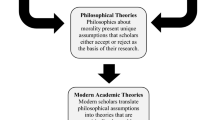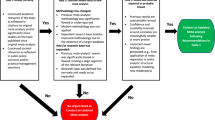Abstract
A major challenge faced by managers is to ensure that the employees they hire are trustworthy. One strand of research in experimental economics interpreted responses in moral dilemma games as signals of traits such as trust. However, participants in these experiments responded as observers (unaffected by their choices), not actors (affected by their choices), thereby undermining the reliability of the signals. In our experiment, participants playing the role of employees were divided into those holding deontological and non-deontological values based on their responses as observers and actors in a realistic domain, unlike the conventional trolley or similar dilemmas. Deontological responses predominated when choices were made as observers and utilitarian choices were preferred in the converse case. A three-person trust game was subsequently used to determine if participants playing the role of employers placed greater trust in the responses of employees given as actors or observers. The game also identified employees who reciprocated their trust. In general, employers placed greater trust in deontologists, and employee responses made as actors evoked even greater trust. And while deontological employees were more likely to reciprocate trust, deontological choices made as actors were seen as more reliable signals of trustworthiness. These findings were corroborated empirically by a sample of HR managers. Managers with deontological values preferred employees holding similar values in their role as actors, not observers. Even among non-deontological HR managers, a statistically significant majority preferred deontologists, and of them, the majority placed greater trust on deontological responses given as actors.





Similar content being viewed by others
References
Alós-Ferrer C, Farolfi F (2019) Trust games and beyond. Front Neurosci 13:887. https://doi.org/10.3389/fnins.2019.00887
Barnett C, Cafaro P, Newholm T (2005) Philosophy and ethical consumption. In: R Hariison, T Newholm, D Shaw (eds). London, UK
Bostyn DH, Roets A (2017) Trust, trolleys and social dilemmas: a replication study. J Exp Psychol Gen 146(5):e1–e7
Boyd R, Richerson PJ (2009) Culture and the evolution of human cooperation. Philos Trans Royal Soc B Biol Sci 364(1533):3281–3288
Broad CD (1930) Five types of ethical theory. Harcourt, Brace and Co, New York
Capraro V, Sippel J, Zhao B, Hornischer L, Savary M, Terzopoulou Z, Faucher P, Griffioen SF (2018) People making deontological judgments in the Trapdoor dilemma are perceived to be more prosocial in economic games than they actually are. PLoS ONE 13(10):e0225850
Conway P, Gawronski B (2013) Deontological and utilitarian inclinations in moral decision making: a process decision approach. J Pers Soc Psychol 104:216–235
Everett JAC, Pizarro DA, Crockett MJ (2016) Inference of trustworthiness from intuitive moral judgments. J Exp Psychol Gen 145(6):772–787
Everett JAC, Faber NS, Savulescu J, Crockett MJ (2018) The costs of being consequentialist: Social inference from instrumental harm and impartial beneficence. J Exp Psychol Gen 79:200–216
Fernandez-Duque D, Wifall T (2007) Actor/observer asymmetry in risky decision making. Judgm Decis Mak 2(1):1–8
Foot P (1967) The problem of abortion and the doctrine of double effect. Oxford Rev 5:5–15
Greene JD (2007) Why are VMPFC patients more utilitarian? a dual-process theory of moral judgment explains. Trends Cogn Sci 11:322–323. https://doi.org/10.1016/j.tics.2007.06.004
Greene J, Haidt J (2002) How (and where) does the moral judgment work? Trends Cognit Sci 6(12):517–523
Greene JD, Sommerville RB, Nystrom LE, Darley JM, Cohen JD (2001) An fMRI investigation of emotional engagement in moral judgment. Science 293:2105–2108
Kahane G (2015) Sidetracked by trolleys: why sacrificial moral dilemmas tell us little (or nothing) about utilitarian judgment. Soc Neurosci 10(5):551–560
Kahane G, Everett JAC, Earp BD, Savulescu J (2015) Utilitarian” judgments in sacrificial moral dilemmas do not reflect impartial concern for the greater good. Cognition 134(January):193–209
Kuibert D, Thompson AE (2019) Stepping into their shoes: reducing the actor-observer discrepancy in judgments of infidelity through the experimental manipulation of perspective-taking. J Soc Psychol 159(6):692–708
Nadelhoffer T, Feltz A (2008) The actor-observer bias and moral intuitions: adding fuel to Sinnott-Armstrong’s fire. Neuroethics 1(2):133–144
Rivera-Urbina GN, Molero-Chamizo A, Hinojiante H, Vargas-Contreras E, Martínez-Garcia C (2021) High and low conflict moral dilemmas resolution: comparing moral judgment from Spanish and Mexican samples. Aust J Psychol 73(2):223–230. https://doi.org/10.1080/00049530.2021.1882276
Rom SC, Weiss A, Conway P (2017) Judging those who judge: Perceivers infer the roles of affect and cognition underpinning others’ moral dilemma responses. Exp Soc Psychol 69(March):44–58
Sacco D, Brown M, Lustgraaf C, Hugenberg K (2017) The adaptive utility of deontology: deontological moral decision making fosters perceptions of trust and likeability. Evol Psychol Sci 3(2):125–132
Thomson JJ (1976) Killing, letting die, and the trolley problem. Monist 59(2):204–217
Uhlmann E, Zhu LL, Tannenbaum D (2013) When it takes a bad person to do the right thing. Cognition 126(2):326–334
Weiner B (1985) An attributional theory of achievement motivation and emotion. Psychol Rev 92(4):548–573
Funding
The research was funded by Ministry of Higher Education of Malaysia with grant number FRGS/1/2020/SS0/USM/02/26. The research is funded by Fundamental Research Scheme Grant (FRGS). Grant number 6711918.
Author information
Authors and Affiliations
Corresponding author
Ethics declarations
Conflict of interest
This manuscript has not been published or presented elsewhere in part or in entirety and is not under consideration by another journal. There are no conflicts of interest to declare.
Additional information
Publisher's Note
Springer Nature remains neutral with regard to jurisdictional claims in published maps and institutional affiliations.
Rights and permissions
Springer Nature or its licensor (e.g. a society or other partner) holds exclusive rights to this article under a publishing agreement with the author(s) or other rightsholder(s); author self-archiving of the accepted manuscript version of this article is solely governed by the terms of such publishing agreement and applicable law.
About this article
Cite this article
Ch’ng, KS., Narayanan, S. Evaluating the trustworthiness of employees: are choices made as actors perceived as a more reliable signal of trustworthiness?. Decision 50, 271–284 (2023). https://doi.org/10.1007/s40622-023-00364-x
Accepted:
Published:
Issue Date:
DOI: https://doi.org/10.1007/s40622-023-00364-x
Keywords
- Actor-observer bias
- Three-person trust game
- Investment dilemma
- Moral values
- Trust and trustworthiness
- Experiment




